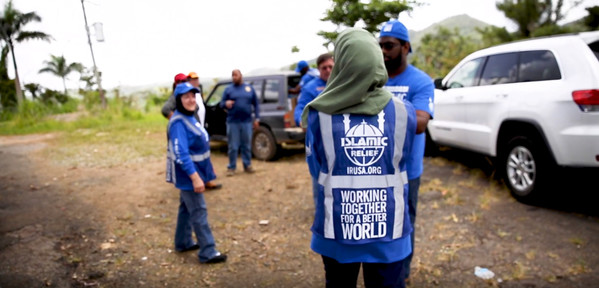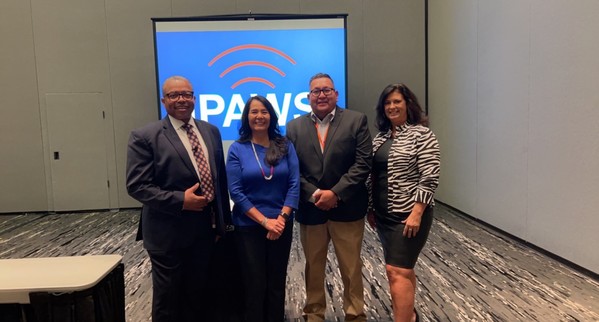|
As of Nov. 10, the National Flood Insurance Program has received more than 44,000 flood claims from Hurricane Ian and has paid more than $437 million to policyholders. This includes flood insurance claims received from five states, with the majority of claims coming from Florida.
FEMA has projected Hurricane Ian could potentially result in National Flood Insurance Program claims losses between $3.5 - $5.3 billion, including loss adjustment expenses.
Since 2017, FEMA has been participating in several reinsurance agreements to help cover flood insurance losses.
For Fiscal Year 2022, FEMA secured $2.49 billion of reinsurance from traditional and capital markets to cover events such as Hurricane Ian. The National Flood Insurance Program continues to monitor the flood insurance claims activity and determine if reinsurance will be triggered.
FEMA’s reinsurance programs include an annual traditional reinsurance program with a $4 billion or more trigger for a percentage of recovery payments and three capital market placements with a recovery payment beginning at $5.32 billion in received claims payments.
To collect the maximum reinsurance amount, the National Flood Insurance Program would need to incur at least $10 billion in flood insurance claims losses.
Additional information on FEMA’s reinsurance program can be found at the National Flood Insurance Program’s Reinsurance Program webpage on FEMA.gov.

When disasters happen, one of the first groups to jump into action are volunteers and voluntary organizations. These organizations rally to support communities from short-term response efforts to long-term recovery. Voluntary organizations are some of the first to arrive during an emergency and the last to leave, remaining even after federal assistance is exhausted.
Collaboration with these organizations is key to understanding the needs of survivors, avoiding duplication of efforts and maximizing the impact of our combined efforts. FEMA’s Voluntary Agency Liaisons are the people that make these connections possible.
Read more about FEMA’s Voluntary Agency Liaisons on the FEMA Blog.
On Nov. 22, FEMA will host a webinar at 2 p.m. ET in recognition of National Caregivers Month. Led by FEMA’s Office of Disability Integration and Coordination, the webinar will explain how the agency helps to prepare caregivers for emergencies and disasters.
National Caregivers’ Month is a time to recognize and honor family caregivers across the country. It offers an opportunity to raise awareness of caregiving issues, educate communities and increase support for caregivers.
Families are the primary source of support for older adults and people with disabilities in the U.S. Many family caregivers both work and provide care, leading to experiencing conflicts between competing responsibilities. Research indicates caregiving takes a significant emotional, physical and financial toll. The Administration for Community Living and FEMA are proud observers of National Caregivers Month and work year-round through programs and councils to support and empower family caregivers.
To register and learn more about the sessions, please visit the webinar homepage.
 L to R: FEMA IPAWS Director Antwane Johnson, Native Public Media Operations Director Melissa Begay, Navajo Nation Emergency Management Director Harland Cleveland, and IPAWS Tribal Liaison Pamela Holstein-Wallace.
On Oct. 30 through Nov. 4, FEMA attended the 79th Annual Convention of the National Congress of American Indians (NCAI) in Sacramento, California. During the convention, FEMA participated in a panel discussion about the agency’s Integrated Public Alert Warning System (IPAWS).
IPAWS delivers timely, geographically targeted messages to phones, televisions, radios and other devices during emergencies to save lives and protect property.
FEMA IPAWS Director Antwane Johnson and Tribal Liaison Pamela Holstein-Wallace were on a panel at NCAI titled “Protection of our Lands and People is a Sovereign Responsibility.” Currently, there are eight tribal nations authorized to send alerts over IPAWS, leaving many other tribes without an early warning capability to rely on during an emergency.
FEMA’s IPAWS offices continues to partner with tribal nations and other jurisdictions to support the unique cross-jurisdictional challenges of public alert and warning. More information about how your agency can become an alerting authority able to send alerts over IPAWS is available on FEMA.gov.
FEMA published the Radio Direction Finding Team resource typing document. This National Incident Management System (NIMS) Resource Typing Definition describes electronic direction-finding operations support for search-and-rescue operations.
For more information, including the full-scope of Search and Rescue resource typing definitions, visit the Resource Typing Library Tool (RTLT).
Resource typing is a key component of NIMS and enables organizations from across the country to work together during incidents of all types and sizes. Implementing NIMS resource management principles across the nation is a fundamental part of building our national preparedness.
FEMA Hosts Civil Rights Summit 3.0
On Nov. 29 and 30, FEMA will host the Civil Rights Summit 3.0: Back to Basics. This summit, hosted by the agency’s Office of Equal Rights, will continue the crucial conversation on civil rights in disaster activities and programs at FEMA.
The summit builds on the three-part series hosted in the fall of 2020, and the one-day event in the fall of 2021, by raising awareness of FEMA’s programs and civil rights efforts. The prior two summits focused on civil rights, accessibility to FEMA programs, prioritizing equity and creating an inclusive, community-based approach to emergency management and disaster response and recovery.
This year’s summit will focus on foundational themes, theories and issues in civil rights and will include presentations on discrimination, housing inequities, intersectionality and underserved communities. FEMA leaders will be joined by external civil rights organizations and community leaders in panels focused on understanding and addressing civil rights issues.
FEMA recognizes that continuous dialogue on civil rights is vital to the agency’s efforts to address the needs of underserved communities more effectively.
While progress has been made, there is more work to be done. This summit aims to continue a collaborative dialogue to identify actual and perceived biases impacting equal access to FEMA programs to strengthen partnerships and move forward together.
Perspectives and feedback from civil rights partners, the public and FEMA’s workforce are crucial so that FEMA can more effectively prepare and serve all communities before, during and after disasters.
Please register here in advance to join the summit discussion! For more information, visit FEMA Civil Rights Summit – 3.0 Back to Basics | FEMA.gov.
…………………………………………………………………………………………………………..
FEMA Releases National Continuous Improvement Guidance
FEMA published the “National Continuous Improvement Guidance.” This guidance provides an approach to conduct consistent and rigorous continuous improvement activities before, during and after real-world incidents. The guidance is intended for the whole community, including state, local, tribal and territorial partners; nongovernmental organizations; the private sector and other organizations with emergency management functions.
FEMA will host a series of 60-minute webinar sessions to provide an overview of the guidance and discuss revisions based on feedback from the national engagement period held earlier this year. Guest speakers will discuss the importance of continuous improvement in emergency management. Webinar sessions will be offered through mid-December.
For questions, please contact FEMA-CITAP@fema.dhs.gov.
…………………………………………………………………………………………………………..
Nominations Open for FEMA’s Emergency Manager Exchange
FEMA’s Emergency Manager Exchange (EMX) is accepting nominations through Nov. 30. In March 2023, four selected participants from non-federal government offices will work alongside FEMA leadership and staff for a 4 to 6-month paid work exchange.
New in 2023, the staff exchange will be fully reciprocal. When the participating government organization sends their employee to work at FEMA, a full-time FEMA employee will be sent to support that non-federal government office or program in return.
For the duration of the assignment, FEMA will reimburse the participant’s home organization for the cost of the participant’s salary up to the federal GS-13 level, plus benefits. This reimbursement will include travel costs and per diem in Washington, D.C. where consistent with FEMA’s travel policies.
The visiting FEMA employee will work to address capability gaps identified by the non-federal government organization in their nomination letter. The exchange is authorized under the Intergovernmental Personnel Act Mobility Program.
Each participant’s non-federal government organization must nominate their applicant to the program. The work exchange position descriptions and the nomination instructions are available on FEMA.gov.
…………………………………………………………………………………………………………..
|